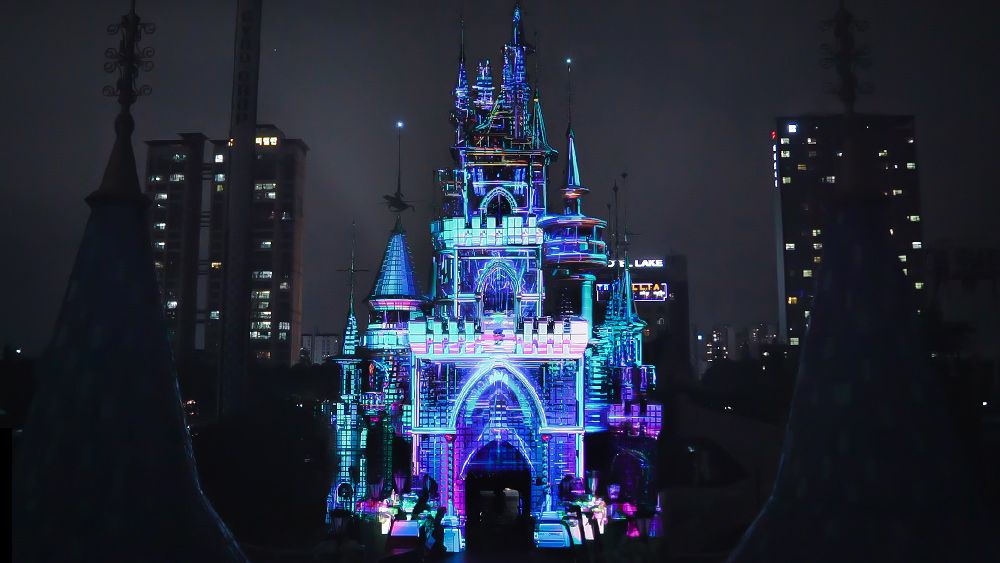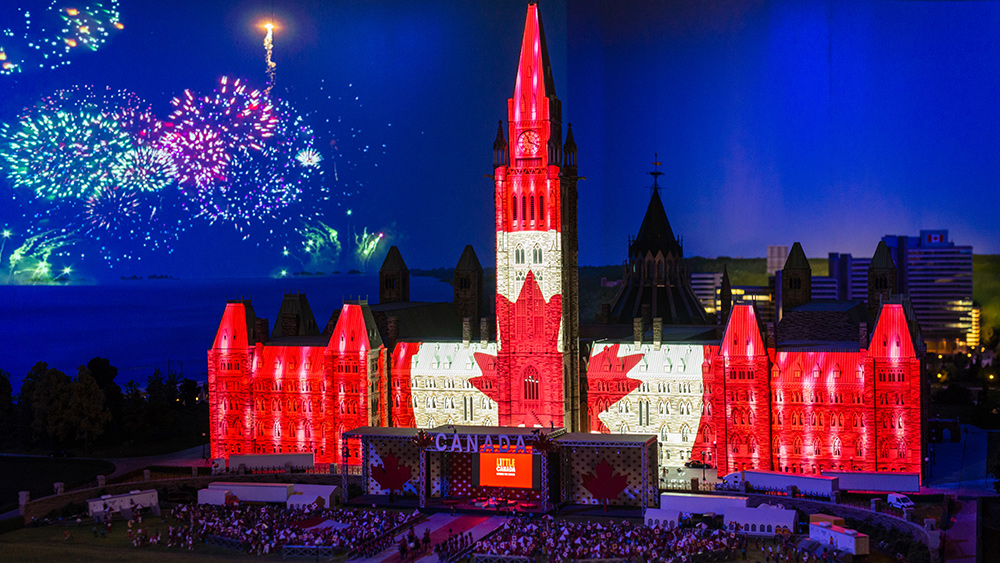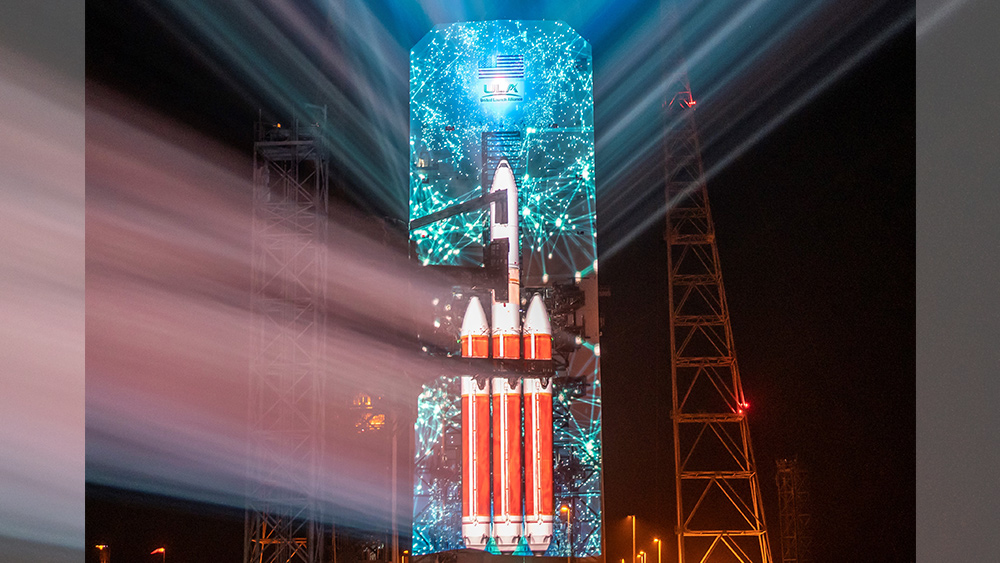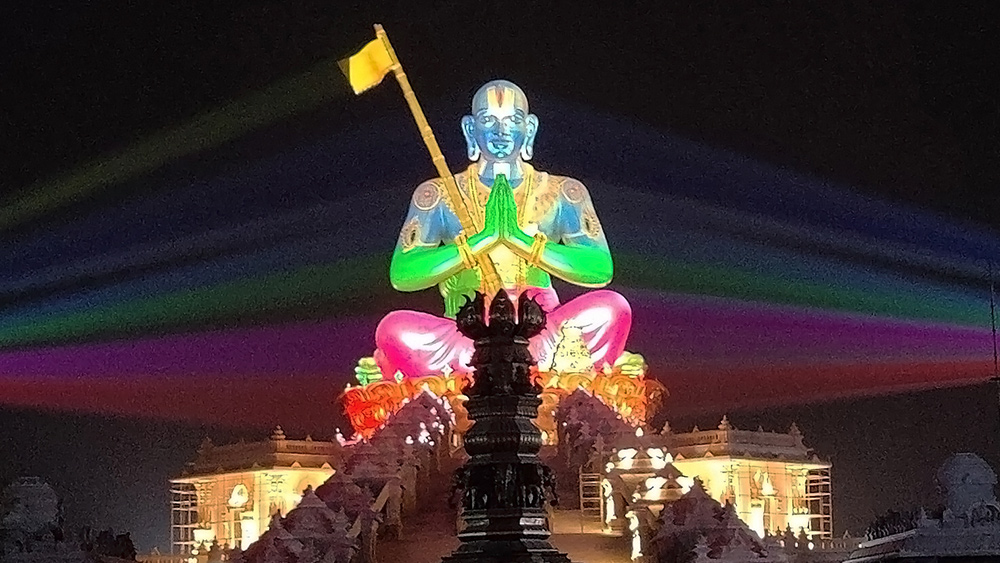Projection mapping is art on a massive scale – the transformation of a familiar object or structure in a way that makes people stop and stare. Great projection-mapping projects are a successful combination of powerful ideas, the right technology, and expertise, paired with flat or complex surfaces and structures to create a great effect.
The technology is primarily used to illuminate a building, sculpture, or 3D object without affixing any permanent physical components to the structure. As an example, a projection-mapped show on a church can highlight the building’s beautiful architecture at night while leaving it untouched by technology during the day. This process can range from a single projector projecting onto a flat surface, like a building’s facade, to complex applications with multiple projectors on large, 3D surfaces, like a statue.
Read on to learn about the five considerations you should bear in mind before embarking on a projection-mapping project.
1. Is projection mapping the right choice for your project?

There are many factors in play when considering projection mapping for a project. Will it be a one-time event, or a permanent installation? If it’s a permanent outdoor installation, environmental factors like snow, rain and winds can affect both the quality of the projected image and the ability to projection-map year-round, so a pod or enclosure for the projectors might be required.
Also, think about where the projectors will be mounted in relation to the projection surface and in relation to the audience. Whether it’s an adjacent parking lot or the top of a neighboring building, determining where to unobtrusively place projectors, as well as a power supply, is important.
Additionally, consider the size and shape of the surface you’d like to map onto. A smaller surface may require only one projector, while larger surfaces, such as buildings and statues, will require multiple projectors.
2. What surface will you use for projection mapping?

The ideal projection surface for projection mapping is lighter in color to allow the content to shine brightly when projected. Projecting on dark brick or a dark surface is not recommended because it will greatly limit the brightness of your content.
In certain applications, where projection on glass is required, a special film can be applied to the windows. This film will still allow light to come through during the day but will act as a reflective surface when projected on. For surfaces that are less than ideal – whether dirty, discolored or non-uniform – software is available to compensate for these imperfections, to deliver a more consistent projected image.
3. What will be the content of your project?

Content creation is often one of the most important aspects of projection mapping that can sometimes be overlooked early in the process of determining whether projection mapping is the right solution for the application in question.
The complexity of the projection mapping, and the fidelity of the content, can have a large impact on the budget and time required to put together a projection-mapping project. A common mistake for new people looking into projection mapping is not correctly accounting for content.
4. What’s the right technology for your project?

Projection mapping can be done with a single projector, or with multiple projectors that are stacked and blended with the intention of creating a large, bright and seamless image. The best way to ensure that content looks as intended is to make sure the projectors are bright enough, with a wide color gamut to reproduce real-world colors. RGB pure laser projectors, which produce a color gamut that approaches the Rec. 2020 color space – closest to what our eyes can see – are extremely bright, making them ideal for projection-mapping projects.
Additionally, media-server software can be used to play back content, with additional features including show control and timeline programming. An image processor can be used to manage content for more complex projection-mapping shows. For any company looking to do projection mapping for its own use, it is recommended to work with an experienced integrator that has an established portfolio of successful projection-mapping applications. The integrator will be able to provide everything that is needed on a temporary basis through rental, or on a permanent basis through purchase.
5. How will you keep your projection mapping looking as good as it does on day one?
The most magnificent projection-mapping displays leave the audience spellbound. To create and maintain this sense of wonder, the projection system needs to be calibrated and maintained. For projects that require multiple projectors, the projectors need to be aligned and calibrated so that the image appears seamless.
Over time, projectors can be bumped, or moved out of place by sound or mechanical vibrations. Software and camera-based solutions are available to easily align projectors and quickly recalibrate the image if it shifts or moves, so the guest experience remains magical.
This article was written by Joel St-Denis from Creative Bloq and was legally licensed through the Industry Dive Content Marketplace. Please direct all licensing questions to legal@industrydive.com.
![]()

